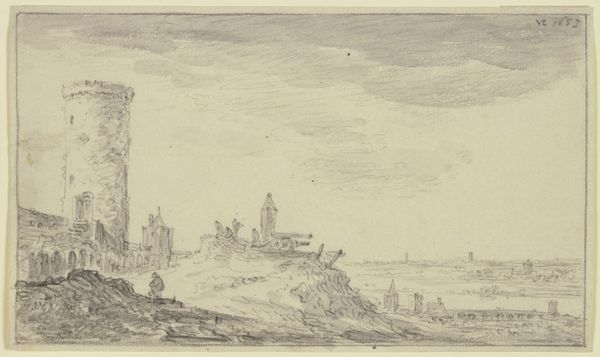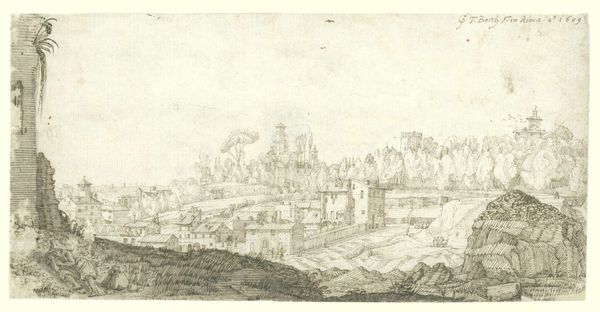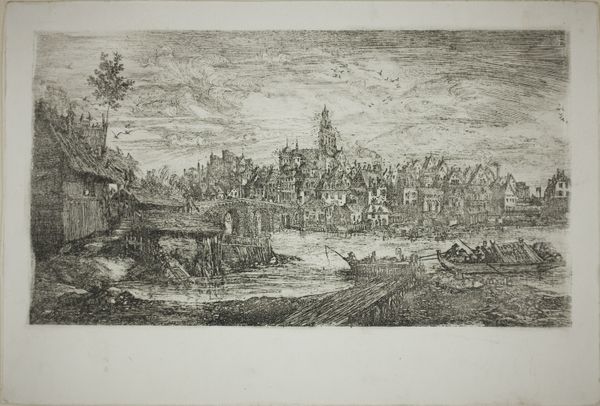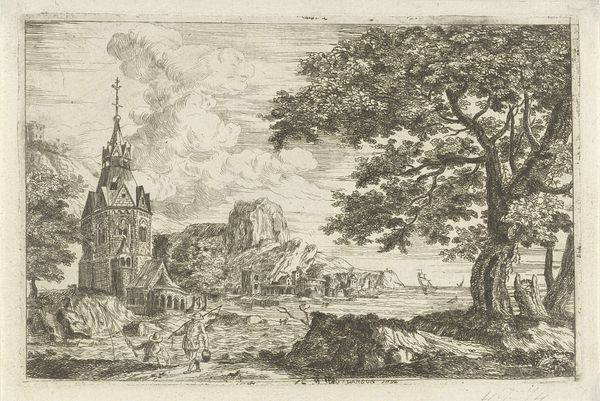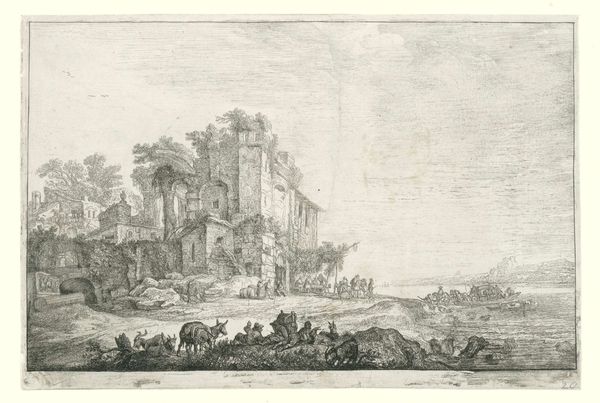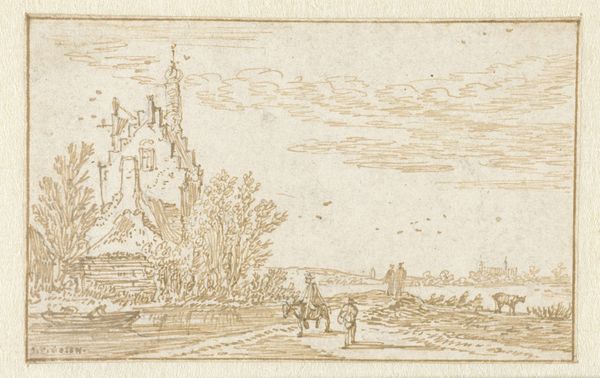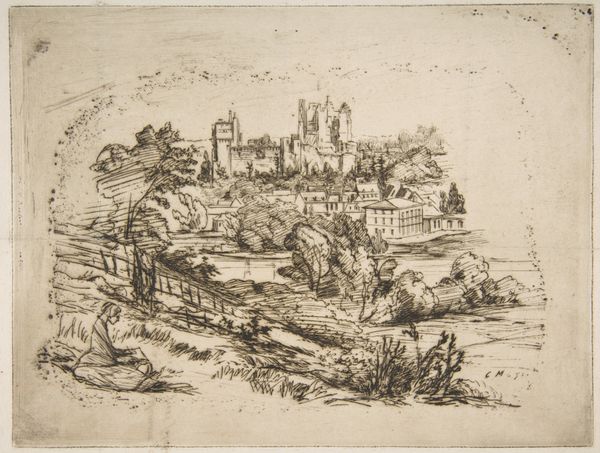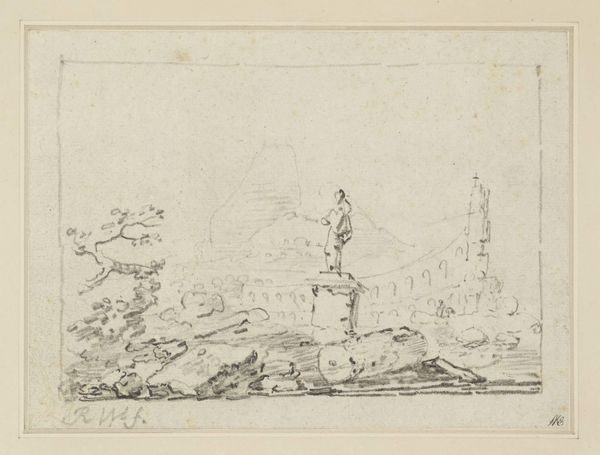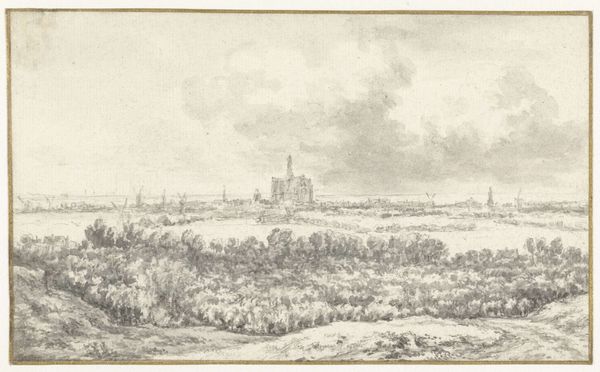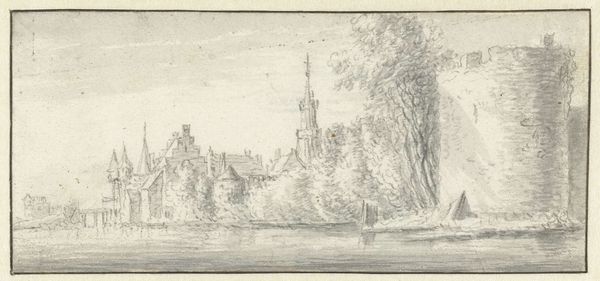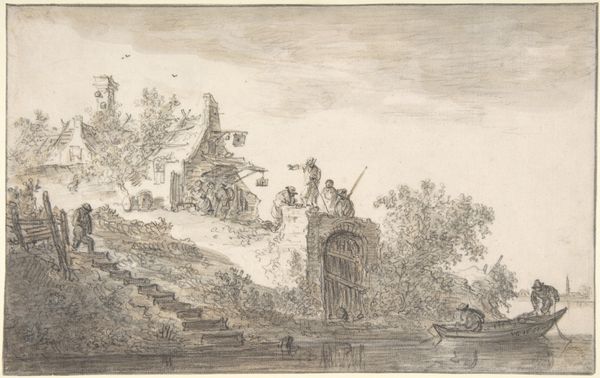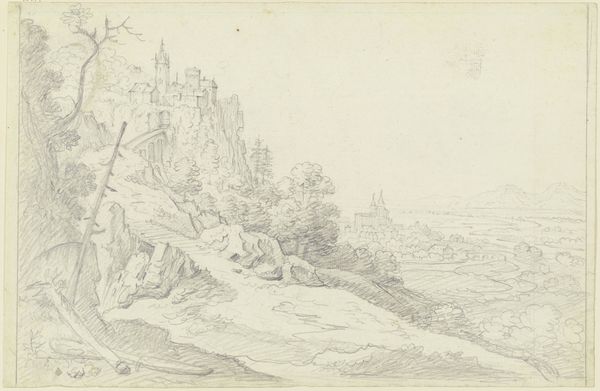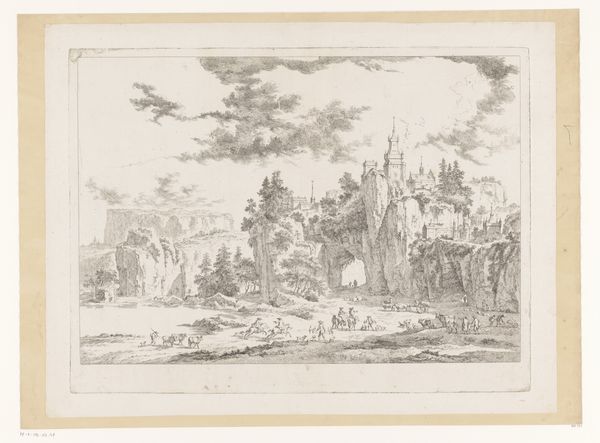
Dimensions: height 123 mm, width 196 mm
Copyright: Rijks Museum: Open Domain
Editor: Here we have Willem Matthias Jan van Dielen's "Ruïne van kasteel te Stromberg" from 1859, made with graphite and etching. The wispy lines give it such a ghostly and ephemeral quality. How do you interpret the structure of this drawing? Curator: Observe how the artist articulates form and space. The composition leads the eye from the foreground, marked by distinct graphite strokes defining the landscape, to the more ethereal rendering of the castle ruins. Note how van Dielen manipulates line weight, deploying a finer, more delicate etching technique to convey the castle’s crumbling facade, contrasted by the density of the trees. Editor: So it's this contrast that builds the overall composition? Curator: Precisely. The strategic deployment of contrasting mediums – the robustness of graphite versus the fineness of etching – facilitates a visual dialogue between solidity and impermanence. How might this reflect broader themes? Editor: I guess the sharp lines of the landscape could symbolize nature's enduring presence against the castle’s decline. It feels as though there's commentary on the transient nature of human achievement against the test of time. Curator: An astute observation. The interplay between the architectural structure and its encroaching environment underscores a tension between man-made structures and nature. Is it possible that Van Dielen uses line variations and shading techniques not just to depict the landscape, but also to elicit emotion? Editor: Absolutely. The somber, muted tones create a contemplative atmosphere, maybe invoking nostalgia for what was. It also directs our attention to certain points of interest by contrasting detailed areas with lighter and sketchier ones. I noticed there’s great control in the line work; the composition doesn't feel unbalanced, despite the contrast in tones. Curator: Agreed. Through line, tone, and form, Van Dielen constructs a compelling meditation on ruins as objects pregnant with aesthetic and historical resonance. By understanding its formal construction, we begin to understand Van Dielen’s commentary on architecture’s cultural role and function in his period.
Comments
No comments
Be the first to comment and join the conversation on the ultimate creative platform.
